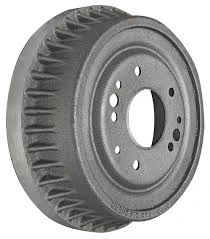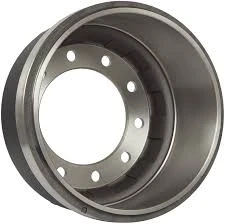
-
 Afrikaans
Afrikaans -
 Albanian
Albanian -
 Amharic
Amharic -
 Arabic
Arabic -
 Armenian
Armenian -
 Azerbaijani
Azerbaijani -
 Basque
Basque -
 Belarusian
Belarusian -
 Bengali
Bengali -
 Bosnian
Bosnian -
 Bulgarian
Bulgarian -
 Catalan
Catalan -
 Cebuano
Cebuano -
 Corsican
Corsican -
 Croatian
Croatian -
 Czech
Czech -
 Danish
Danish -
 Dutch
Dutch -
 English
English -
 Esperanto
Esperanto -
 Estonian
Estonian -
 Finnish
Finnish -
 French
French -
 Frisian
Frisian -
 Galician
Galician -
 Georgian
Georgian -
 German
German -
 Greek
Greek -
 Gujarati
Gujarati -
 Haitian Creole
Haitian Creole -
 hausa
hausa -
 hawaiian
hawaiian -
 Hebrew
Hebrew -
 Hindi
Hindi -
 Miao
Miao -
 Hungarian
Hungarian -
 Icelandic
Icelandic -
 igbo
igbo -
 Indonesian
Indonesian -
 irish
irish -
 Italian
Italian -
 Japanese
Japanese -
 Javanese
Javanese -
 Kannada
Kannada -
 kazakh
kazakh -
 Khmer
Khmer -
 Rwandese
Rwandese -
 Korean
Korean -
 Kurdish
Kurdish -
 Kyrgyz
Kyrgyz -
 Lao
Lao -
 Latin
Latin -
 Latvian
Latvian -
 Lithuanian
Lithuanian -
 Luxembourgish
Luxembourgish -
 Macedonian
Macedonian -
 Malgashi
Malgashi -
 Malay
Malay -
 Malayalam
Malayalam -
 Maltese
Maltese -
 Maori
Maori -
 Marathi
Marathi -
 Mongolian
Mongolian -
 Myanmar
Myanmar -
 Nepali
Nepali -
 Norwegian
Norwegian -
 Norwegian
Norwegian -
 Occitan
Occitan -
 Pashto
Pashto -
 Persian
Persian -
 Polish
Polish -
 Portuguese
Portuguese -
 Punjabi
Punjabi -
 Romanian
Romanian -
 Russian
Russian -
 Samoan
Samoan -
 Scottish Gaelic
Scottish Gaelic -
 Serbian
Serbian -
 Sesotho
Sesotho -
 Shona
Shona -
 Sindhi
Sindhi -
 Sinhala
Sinhala -
 Slovak
Slovak -
 Slovenian
Slovenian -
 Somali
Somali -
 Spanish
Spanish -
 Sundanese
Sundanese -
 Swahili
Swahili -
 Swedish
Swedish -
 Tagalog
Tagalog -
 Tajik
Tajik -
 Tamil
Tamil -
 Tatar
Tatar -
 Telugu
Telugu -
 Thai
Thai -
 Turkish
Turkish -
 Turkmen
Turkmen -
 Ukrainian
Ukrainian -
 Urdu
Urdu -
 Uighur
Uighur -
 Uzbek
Uzbek -
 Vietnamese
Vietnamese -
 Welsh
Welsh -
 Bantu
Bantu -
 Yiddish
Yiddish -
 Yoruba
Yoruba -
 Zulu
Zulu
Jan . 20, 2025 05:10
Back to list
changing rear drum brake pads
Changing rear drum brake pads can seem daunting at first, but with a thorough understanding and the right tools, it becomes a manageable task that enhances both vehicle safety and performance. For those who have never tackled this themselves, or are looking to refine their technique, this guide provides a comprehensive breakdown.
Observing the internal mechanics, each part serves a critical role the brake wheel cylinder, the springs, and the brake shoes. Carefully inspect these parts for any excessive wear or damage, since replacing these simultaneously can prevent future issues. Document the assembly's configuration with a quick photo, ensuring that you have a reference point for reassembly. Professional expertise dictates that after the brake shoes are unclipped and removed, you replace people springs simultaneously as old springs lose tension over time. When mounting new brake pads, be sure they are precisely aligned and secured. Each component's integrity is pivotal for correct function. The process concludes with reattaching the drum. It's beneficial to adjust the brake shoes so they slightly drag against the drum—testing this by spinning the wheel by hand can confirm correct adjustment. Once this is secured, refit the wheel, tighten the lug nuts slightly, lower the vehicle, then fully secure the lug nuts in a crisscross pattern to ensure even pressure. Testing is the final stage. Gently press the brake pedal, confirming that movement feels consistent and firm. Take the vehicle for a test drive on a quiet road to ensure the brakes engage smoothly, without noise, vibration, or pulling. It's evident that changing rear drum brake pads isn't just a task for seasoned mechanics. With the appropriate knowledge and care, anyone can undertake this crucial maintenance item. Successfully doing so not only enhances vehicular control but also builds confidence in car maintenance skills.


Observing the internal mechanics, each part serves a critical role the brake wheel cylinder, the springs, and the brake shoes. Carefully inspect these parts for any excessive wear or damage, since replacing these simultaneously can prevent future issues. Document the assembly's configuration with a quick photo, ensuring that you have a reference point for reassembly. Professional expertise dictates that after the brake shoes are unclipped and removed, you replace people springs simultaneously as old springs lose tension over time. When mounting new brake pads, be sure they are precisely aligned and secured. Each component's integrity is pivotal for correct function. The process concludes with reattaching the drum. It's beneficial to adjust the brake shoes so they slightly drag against the drum—testing this by spinning the wheel by hand can confirm correct adjustment. Once this is secured, refit the wheel, tighten the lug nuts slightly, lower the vehicle, then fully secure the lug nuts in a crisscross pattern to ensure even pressure. Testing is the final stage. Gently press the brake pedal, confirming that movement feels consistent and firm. Take the vehicle for a test drive on a quiet road to ensure the brakes engage smoothly, without noise, vibration, or pulling. It's evident that changing rear drum brake pads isn't just a task for seasoned mechanics. With the appropriate knowledge and care, anyone can undertake this crucial maintenance item. Successfully doing so not only enhances vehicular control but also builds confidence in car maintenance skills.
Latest news
-
Rear Drum Brakes Maintenance TipsNewsAug.04,2025
-
Key Components Affecting Brake Drum FunctionNewsAug.04,2025
-
Important Inspection for Truck Drum BrakeNewsAug.04,2025
-
How to Prepare for Changing Rear Drum BrakesNewsAug.04,2025
-
Essential Tools for Cleaning Drum Brakes ProperlyNewsAug.04,2025
-
Brake Drum Function GuideNewsAug.04,2025
-
Safety Features of Red Brake DrumsNewsAug.01,2025
